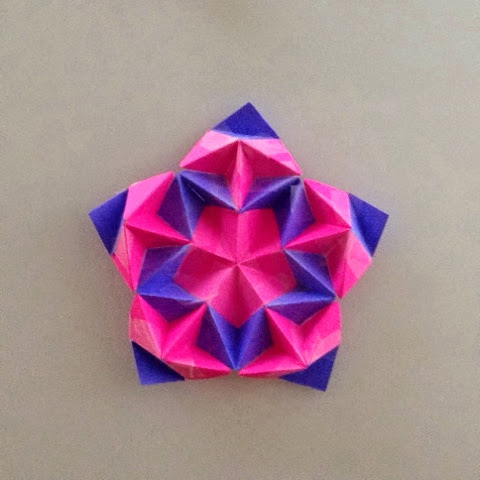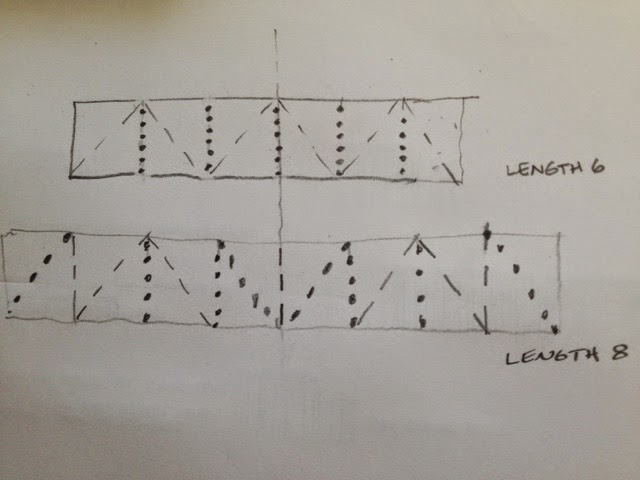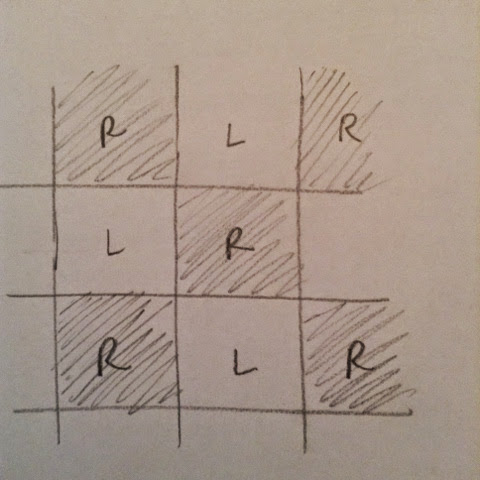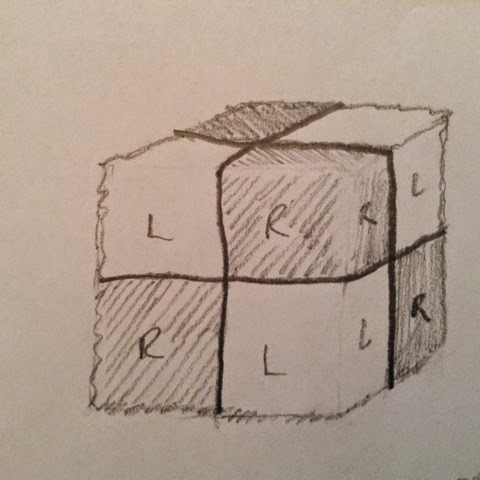The Penrose tiling of rhombs, a non-periodic tiling of the plane, can be approximated by corrugated (i.e., diagonally folded) squares. Projected onto the plane, such an approximation cannot be exact because diagonally folded squares do not project as rhombs unless the diagonal fold is parallel to the plane, and, when that is the case, all such rhombs project their longer diagonal at true length. The rhombs in the Penrose tilings have longer diagonals of two different lengths, so they cannot be projections of diagonally folded squares of the same size.
This taped-together paper model (shown from each side in the two images) mimics the arrangement of rhombs in a small portion of a Penrose tiling. Though the imitation of the Penrose tiling is approximate, the assemblage manages to remain reasonably flat.
There are two ways to weave this corrugation pattern from straight strips: the straight strips can be composed of whole squares or they can be composed of diagonally-cut half squares. The latter is the way a quad-faced map is normally converted to plain weaving: it adds a weave opening at the center of each square in addition to those at the corner of each square.
When the straight weavers are composed of squares, there are only two kinds of weaver in this passage, both have cosine-like symmetry in their folding.
In each square within a weaver there are four possibilities, either of the two diagonals of the square can be chosen for the fold and, the fold can be mountain (dotted) or valley (dashed).
Ten of each kind of weaver is needed to weave this passage.














